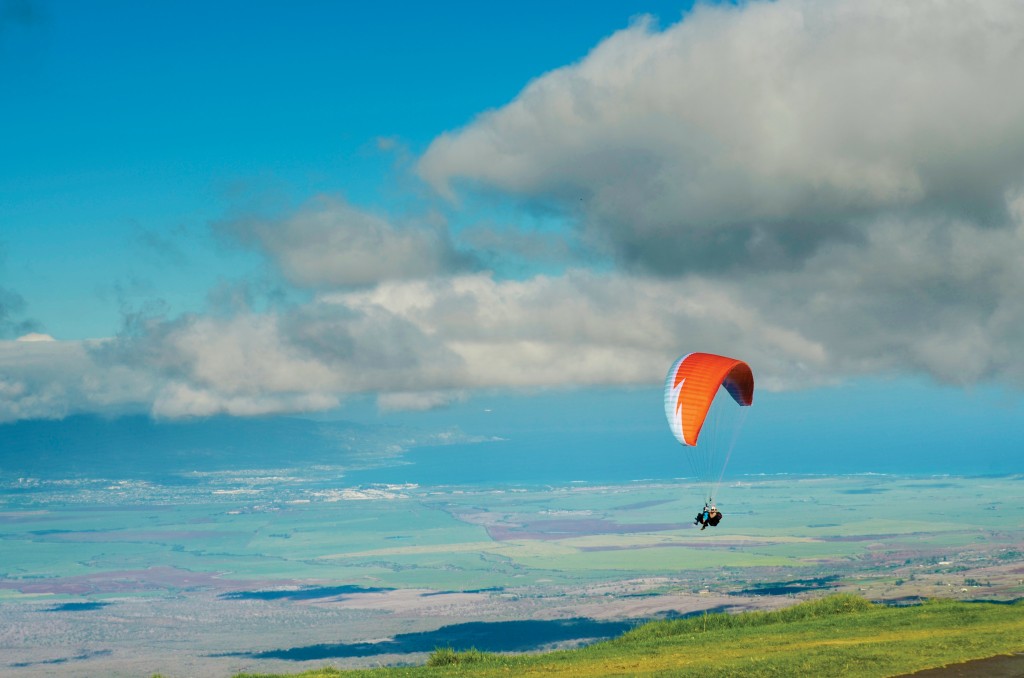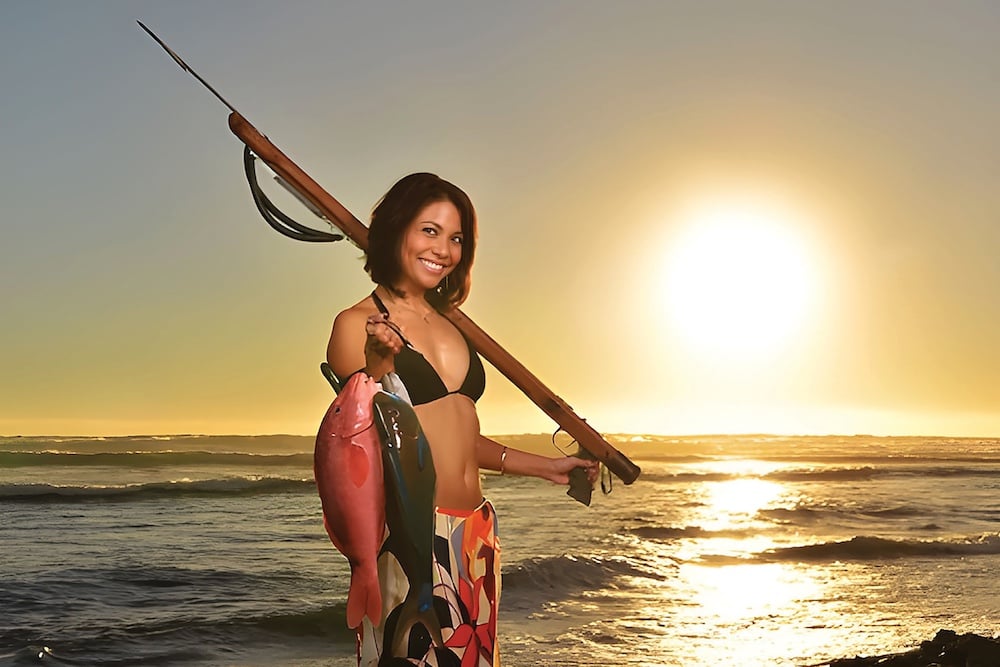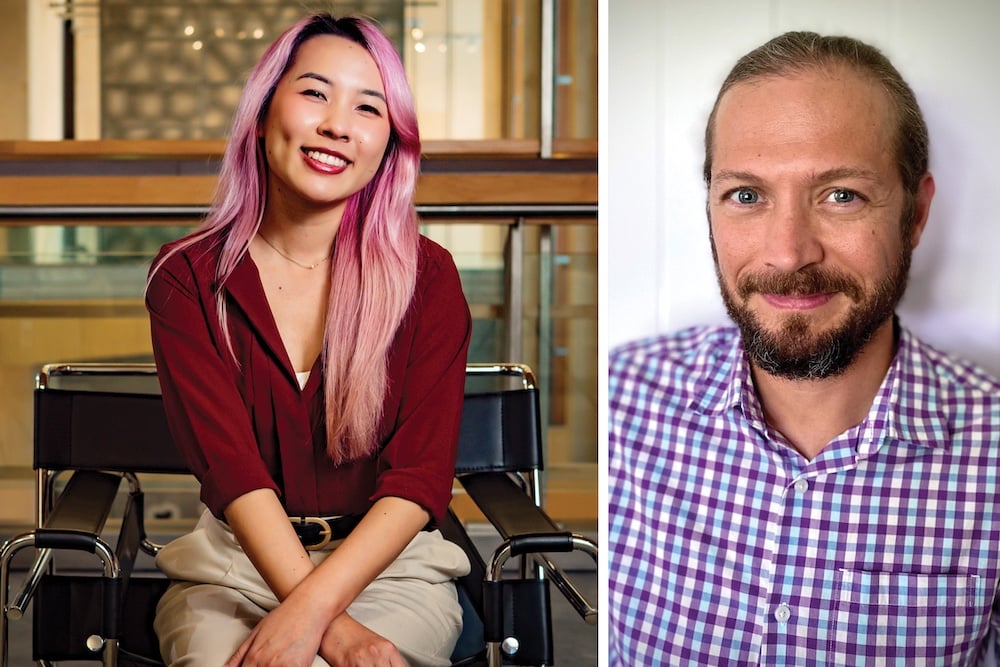My Job: Flying High and Free

NAME: Paul Franco
AGE: 40
JOB: Paragliding and tandem instructor, Proflyght Paragliding, based in Kula, Maui
START: Franco was born in Sao Paulo, Brazil, to an American mother and a Brazilian father. His father was an airline pilot and also flew “old-school” hang gliders, which had heavier, delta-shaped aluminum frames. The elder Franco became a paragliding instructor (with the lighter, safer parachutes) in the ’80s and trained his son to follow in his footsteps.
Franco and his wife moved to Florida in 1996 and he later opened a paragliding school in Upstate New York. Tiring of Mainland weather, he took a job as a paragliding instructor on Maui in 2000.
DEFINITIONS: “Paragliding and hang gliding are considered two different sports,” Franco explains. “A paraglider is a parachute that glides, and is considered more versatile. It has soft wings and has a slower launching and landing speed, so if you don’t have a good landing, you’re much safer using a paraglider. Also, it’s much more convenient to pack and carry around; it only weighs about 20 pounds, whereas a hang glider weighs about 65 pounds and you need a truck to transport it. Hang gliding is a dying breed.”
TRAINING: Beginners start on flat ground and learn how to inflate, control and steer the paraglider. The instructor uses a remote radio to give instructions to the student. Gradually, as the student gets more experienced, the launching elevations get higher on Haleakala, all the way up to 6,500 feet.
CHALLENGES: “Paragliding is very free,” Franco says. “There are no police up there regulating you – so you have to make good decisions. I would say the sport is very safe, but the people that are controlling it can make it dangerous. I have seen many other pilots have accidents, but I have not personally caused or sustained any injuries.”
“The most challenging part of my job is calming people’s nerves and directing that energy toward what they need to do to take off and have a smooth, enjoyable flight.”
ADVICE TO NEWBIES: “Before you can become an instructor, you have to become an Advanced Pilot. This will require flying as often as possible for many years. You will also need to be articulate and a good listener.”
PAY RANGE: “We make roughly 40 percent of what a flight costs the customer. For tandem flights, that would equal about $90, and for solo instruction, that would be about $38 an hour. But if there are no flights, we don’t get paid.”
This interview has been edited for clarity and conciseness.





